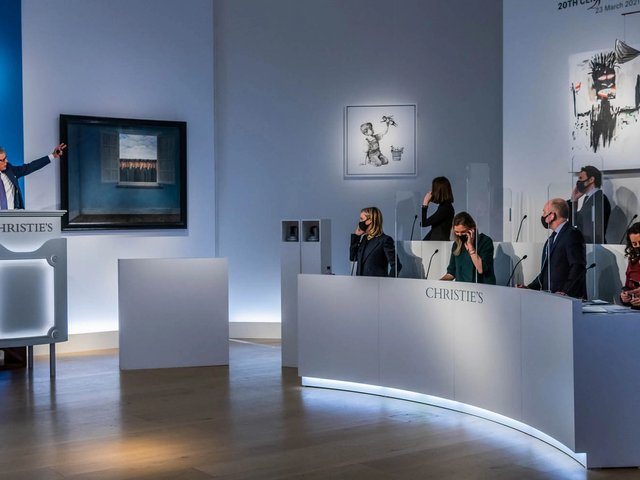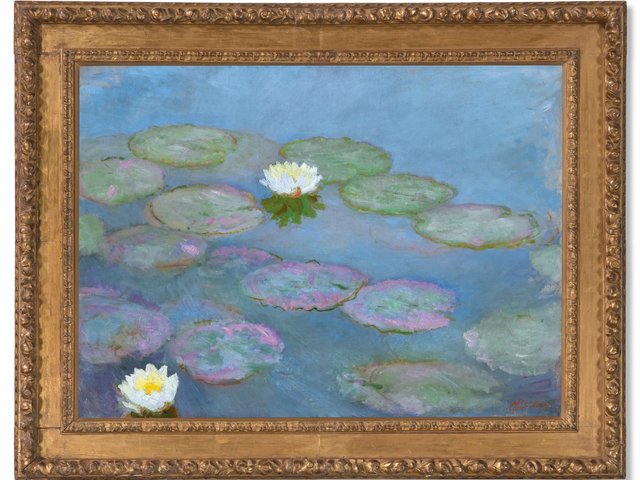Christie’s is going all in on Hong Kong. “A moment where things are more difficult is precisely when you have to make a statement,” said the auction house's chief executive officer Guillame Cerutti shortly after the unveiling of its new headquarters in the city last week. “It's important for our clients, it's extremely important for the stakeholders, for the cultural community, for our staff as well to feel that we are here to stay. We're ambitious.”
The 50,000 sq ft, three-storey space of the new Zaha Hadid Architects-designed Henderson Building will hold its first sale today (26 September) headlined by one of Claude Monet’s Nymphéas waterlilies and Vincent Van Gogh’s Les canots amarrés. Cerutti said that, at the opening, many clients told him this is "what Hong Kong needs".
"I believe very much in this positive energy, especially when you are on the downside of the market."
Christie’s launch comes on the heels of Sotheby’s new Hong Kong 24,000 sq ft space in the Landmark Chater building in Central and Phillips’s new 52,000 sq ft headquarters in West Kowloon, which opened in March 2023. Although Hong Kong and mainland China are both seeing property-driven economic slumps as well as intensifying cultural censorship, they continue to be a significant market for auctions. Buyers from Asia-Pacific accounted for 28% of Christie's sales in 2023, and 21% in the first half of this year.
“We need to be present in Asia," Cerutti said. "We have been here for many years, but despite the fluctuation of the economy, it's a region that will, economically and in our field, remain extremely important. Reinforcing, reaffirming our presence here, from this point of view, is very important.”

Guillame Cerutti
Courtesy of Christie's
Within the Hong Kong salesroom, Cerutti said, between 2014 and 2023 buyers have overwhelmingly hailed from the Asia Pacific region, registering at 85% in recent years but down from 90% a decade ago. Of those, Hong Kong and mainland Chinese clients each represent a third, with about 20% coming from Taiwan, a proportion that has been consistent over this period. The strongest increase has been collectors from South Korea, rising threefold from 1% to 3% between 2014 and 2023. “They are still in proportion a smaller cohort, but increasing the fastest.” Other groups like Southeast Asian buyers have held steady, with Indonesia going from 4% to 5% and Singpore from 3% to 4%.
Sales values in Hong Kong have overall risen 41% up from 2014, Cerutti said, but the majority are online sales, which are dominated by luxury goods not art. Luxury sales have doubled, drawing in new millennial clients. The average age of buyers in Hong Kong have hovered around 44.
Asia’s increasing centrality has brought a need “to elevate the Hong Kong salesroom to the same standards that we have in New York, in London or even in Paris,” Cerutti said. Christie’s plans to have its Asia sales annually in September, positioned after Frieze Seoul.
The regional downturn has not slowed Asia’s momentum. “The energy in Seoul is really impressive," Cerutti said. "It is a little bit like Hong Kong, it's what I call a complete art scene. You have institutions, museums of very high quality, curators who are very sophisticated, with a tradition of artists, galleries, local auction houses. It is a very interesting place to observe. But does this place compete with Hong Kong? I don't think so. It's more complementary to Hong Kong, and it's much needed to have regional additional capitals for the art market. But Hong Kong remained the hub in terms of the attractiveness of the players."
Further proof of Christie’s commitment to the region is seen in it launching an account on Chinese social media WeChat in 2020, allowing for bidding on the platform in 2021, and live sales there last year.
Cerutti reflects on China's economic slowdown: ”The recovery from Covid was slower. The challenges for the economies were different. Asia is still growing at a higher rate than other regions, but it's not what it was like five years ago.”
But he urges a more macro view of the situation. "Having been in the industry for a long time, it's a question of cycles" that last "generally for two or three years", he said. So, "2023 and 2024 will be down compared to 2022 but we hope that this adjustment will help for a rebound in the fall and in 2025".





